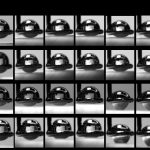A new contribution entitled “Water droplets and air bubbles at magnesite nano-rough surfaces: analysis of induction time, adhesion and detachment using a dynamic microbalance” and published in the Minerals Engineering journal is the result of our collaborative project with Northeastern University in China. Two scholars from China Zhanglei Zhu and Donghui Wang explored the effects of nano-scale roughness of magnesite minaral on adhesion with water droplets and air bubbles.
In this study, natural magnesite lumps were polished by a series of sandpapers and diamond to produce four magnesite specimens having 2 to 240 nm root-mean-square roughness. The dynamic measurements of attachment, spreading, adhesion, and separation with a high-sensitivity microelectronic mechanical balance revealed the effect of surface nano-scaled roughness on the induction time and forces of spreading, adhesion and separation for both water droplets and air bubbles. It was found that the increasing nano-scaled roughness enhances the spreading of water on hydrophilic magnesite and strengthens the water-magnesite adhesive contact. Nano-roughness also causes delays in attachment of air bubbles to magnesite surface, inhibits displacement of water by adhering air bubbles, and reduces the adhesive strength of air bubbles to the magnesite surface, factors that might slow down the flotation separation.
Magnesite Nano-roughness Effect on Flotation
This entry was posted in Publications. Bookmark the permalink.

